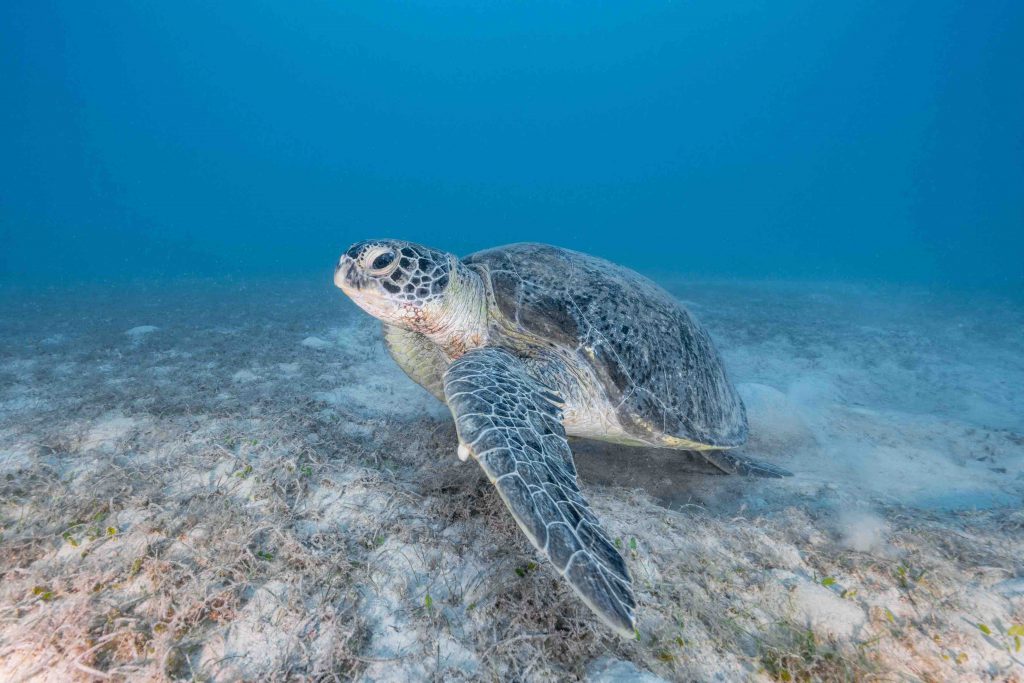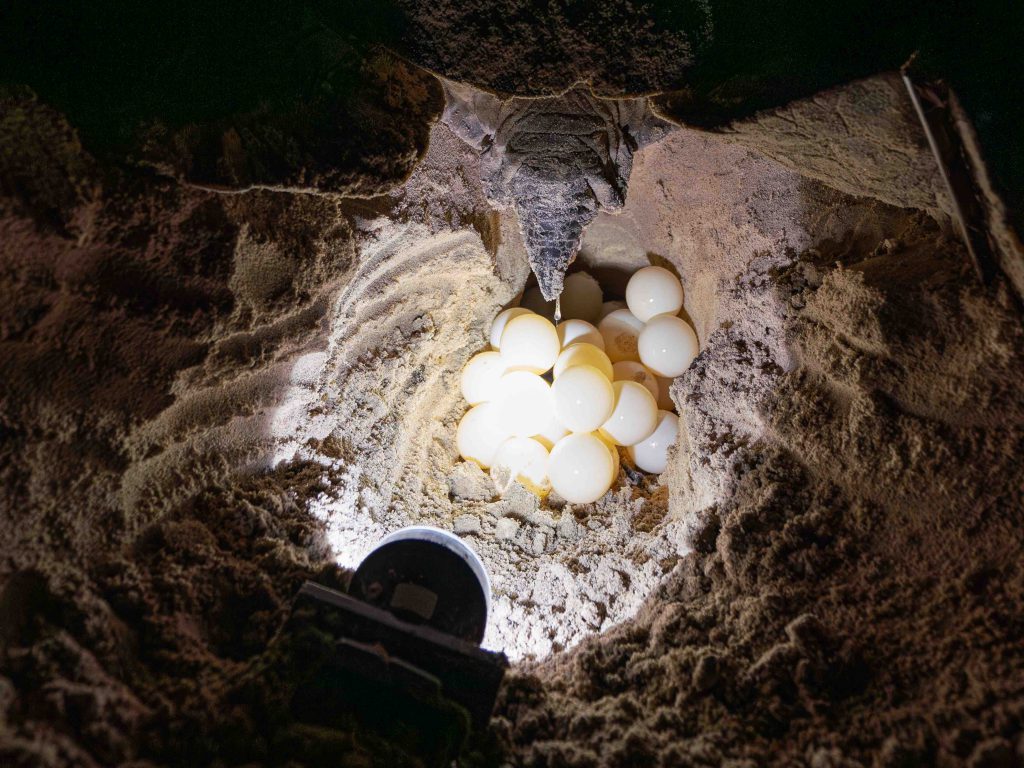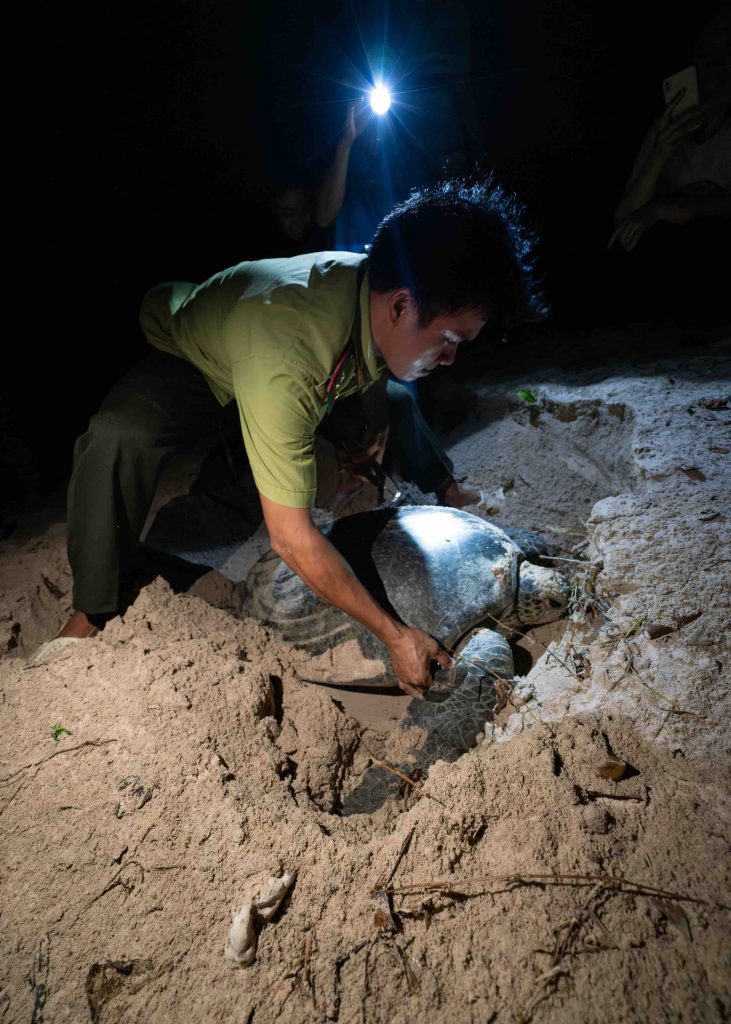Thien Nguyen
Bay Canh Island is one of the largest islands in the Con Dao Archipelago, renowned for its pristine beauty, rich coral reef ecosystem, and resident sea turtles. Among the area’s protected sea turtles, the green sea turtle (Chelonia mydas) is the most common species, laying eggs on the tranquil beaches of Hon Bay Canh.

Con Dao is one of the most important sites in Vietnam for sea turtle conservation. The nesting of sea turtles at Hon Bay Canh is a natural event that marks a significant milestone in marine conservation efforts and the sustainable development of ecotourism by the Con Dao National Park (Ba Ria – Vung Tau province). If you have the chance to witness sea turtles laying eggs in Con Dao, especially at Hon Bay Canh, you will witness one of the most astonishing reproductive processes in the natural world.
To participate in this experience, visitors must register with the Con Dao National Park Management Board in advance and travel to Hon Bay Canh in the afternoon to begin the tour at night. To avoid predators and disturbances, mother turtles only crawl onto the sandy beaches to nest in the dark. Guides will equip you with flashlights that emit soft red light and explain the rules to avoid impacting the natural environment where the turtles nest.
As night falls, rangers patrol Bai Cat Lon Beach. If they spot a sea turtle coming ashore to lay eggs, they notify the guides to bring visitors over.

On the way to Bai Cat Lon, the cool, fresh sea air and gentle sounds of the waves felt like gifts from nature. It was dark except for the faint light ahead from our flashlights. The experience truly began when the rangers showed us the first tracks in the sand—tracks made by sea turtles as they crawled ashore.
Sea turtles are very cautious about choosing a good place to nest. They slowly crawl over the sand, searching for high and safe areas, unaffected by the waves. Once the right spot is found, the mother turtle digs a deep hole with her hind legs, moving slowly and meticulously. With great patience, the turtle builds a safe nest.
After digging the hole, the mother turtle starts laying eggs. Each clutch can contain between 80 to 150 eggs. The eggs are small and round, about the size of a ping-pong ball. The entire process can last from one to two hours. The rangers ensure that visitors maintain a safe distance to avoid frightening the mother turtle, which could affect the nesting process.
Once the last egg is in the nest, the mother turtle rests for a moment before covering the hole with sand, concealing the nest from natural predators like seabirds, rats, crustaceans, and other carnivorous animals. After covering the hole, the mother turtle starts her journey back to the sea. Many people are moved by the sight of a mother turtle slowly crawling down the sandy beach and disappearing into the vast ocean. It is incredible to watch the sacred life cycle and cycle of nature unfolding right on this beach, on a small corner of our planet.

If you are lucky and join a tour after the eggs have hatched, which takes some 45 to 60 days, you might witness another marvelous spectacle: the process of releasing hatchlings into the sea. At the right time, the tiny turtles, no larger than the palm of your hand, break through their eggs’ shells and crawl out of the sand. The sound of the waves and the vast ocean trigger their instincts, prompting them to scurry toward the sea. Here, the sea turtle conservation team stands ready to assist, ensuring they do not encounter dangers from predators or natural obstacles on their way to the sea. The hatchlings’ journey of exploration and survival in the vast ocean begins.
Con Dao’s sea turtle egg-laying tours are more than just tourist activities, but a chance for visitors to gain a deeper understanding of the importance of sea turtle conservation and these creatures’ habitats. Visitors will learn ways to help protect sea turtles, from avoiding polluting the marine environment to supporting conservation organizations by spreading messages about nature conservation.
Con Dao National Park is a prime example of sustainable ecotourism development that makes positive contributions to protecting endangered species. The conservation efforts of local authorities and wildlife protection organizations have helped maintain the local sea turtle population. For visitors, the experience of watching sea turtles lay eggs is a key highlight of this success story.
Visitors watching nesting sea turtles must not:
– Use flashlights with strong lights
– Make sudden movements or loud noises
– Get too close to the turtles
– Touch the turtles or their eggs










